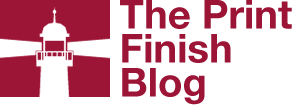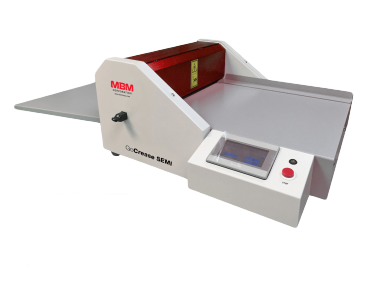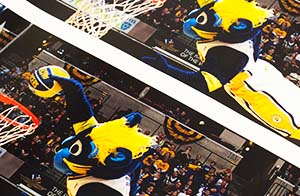It isn’t news that commercial printers are moving to the newer digital printing technologies. Digital allows you to improve print quality, give customers more options and offer niche products such as larger-format books.
But the shift also requires you to explore changing your binding and finishing equipment and processes. Ignoring the ways that digital-printing output differs from offset output can cause problems downstream that will eat away at the financial benefits of going digital in the first place.
First, compared to offset, there’s a lot of color in digital printing. You’re often dealing with heavy digital ink or toner coverage on coated stocks. So you’ll need bindery equipment that will smoothly feed coated paper and keep inks and toner untouched.
Second, you’ll want automated equipment that is easy to operate, so you can make job changeovers quickly and produce short print runs without waste.
Third, if like many printers you have a hybrid offset and digital printing operation, you’ll need bindery equipment and finishing machines that can handle both kinds of output and change quickly from one to the other. For instance, your binding and finishing will have to deal with both the uncollated output of offset and the collated output of digital without compromising set integrity.
Fourth, paper substrate coming from a digital press is more difficult to handle in the finishing stage. That’s because, in digital printing, paper will curl from the heat of the press fuser, there’s much more static from drawing the moisture from the substrate, images are easily scratched off because toner is only set on the surface of the substrate, and images are subject to shifting because there are no paper gripers during an image-setting process inside the press.
Fifth, you have to accommodate the change from scoring to creasing. In a digital process, rotary scoring blades would cause sheets to crack once they are folded. Cracking is less of a concern with the new creasing machines because they use a male and female reciprocating die to put the impact crease in the sheet.
Sixth, while offset and digital printing require different skills of the operator, the operators of both kinds of printing need to understand the binding and finishing machines that will handle their output.
The same can be said about your finishing department. They will need to know how to determine the requirements of each job and the job’s quantity cut-off point. Then they can determine the right job for the right piece of equipment and avoid bindery bottlenecks.
All of the above are reasons for discussing your needs and expectations with your finishing and bindery equipment sales representative. And when you do, make sure you can show him or her samples from a wide variety of print jobs, digital and offset. In the end, you want to end up with finishing and bindery equipment that is automated, user friendly, allows quick and easy job set-up, and is clearly able to handle the different physical characteristics of both offset and digital printing output.
For more information about digital printing, binding and finishing, see Karen Lowery Hall’s excellent article on Quick Printing Magazine’s website.


